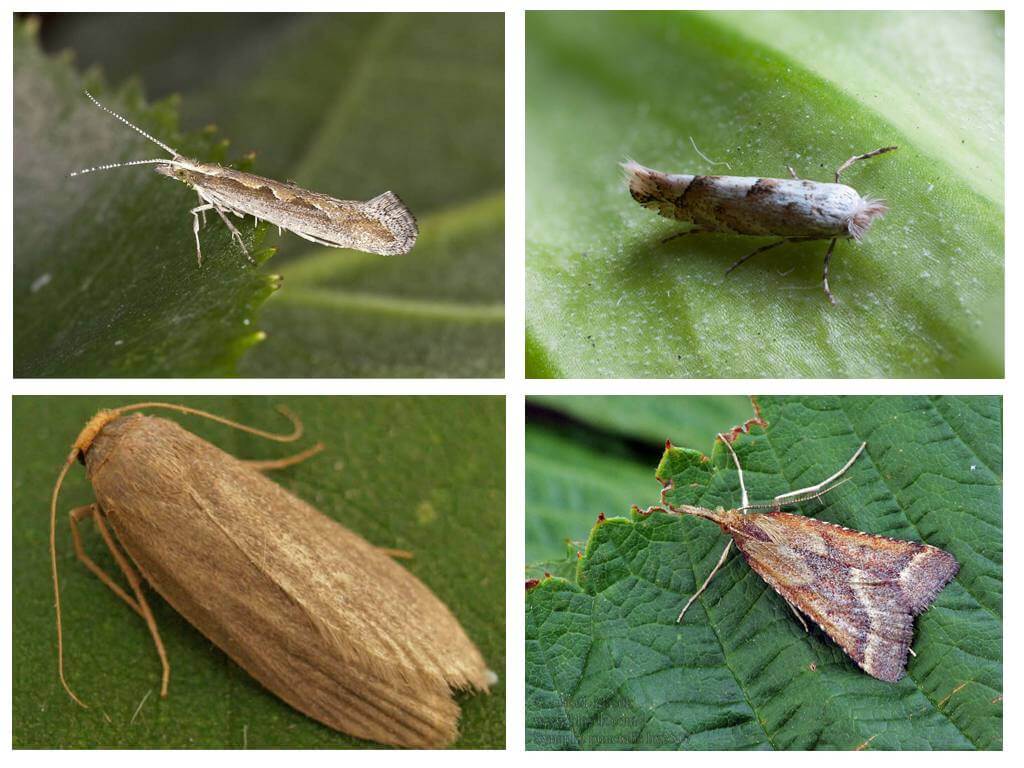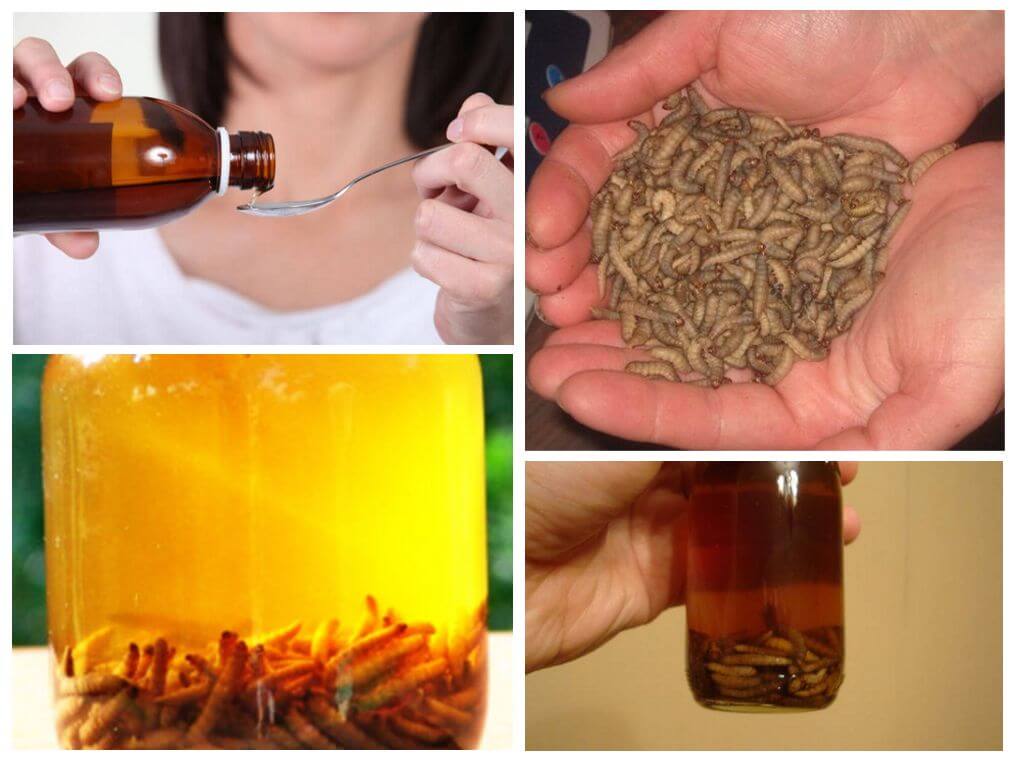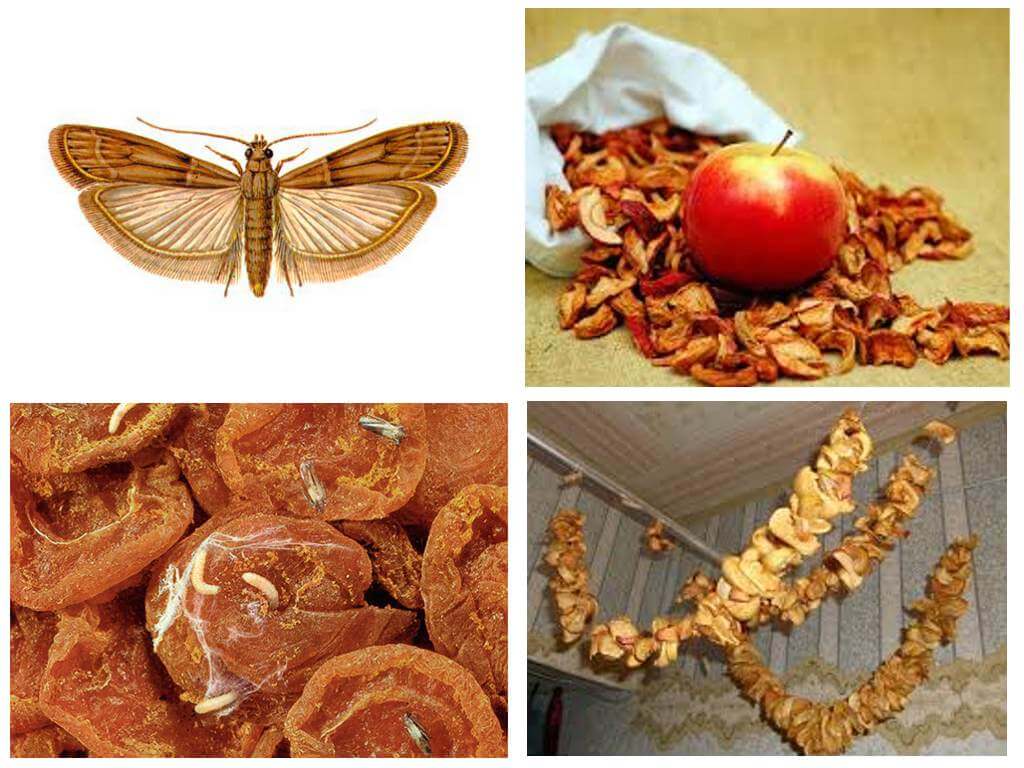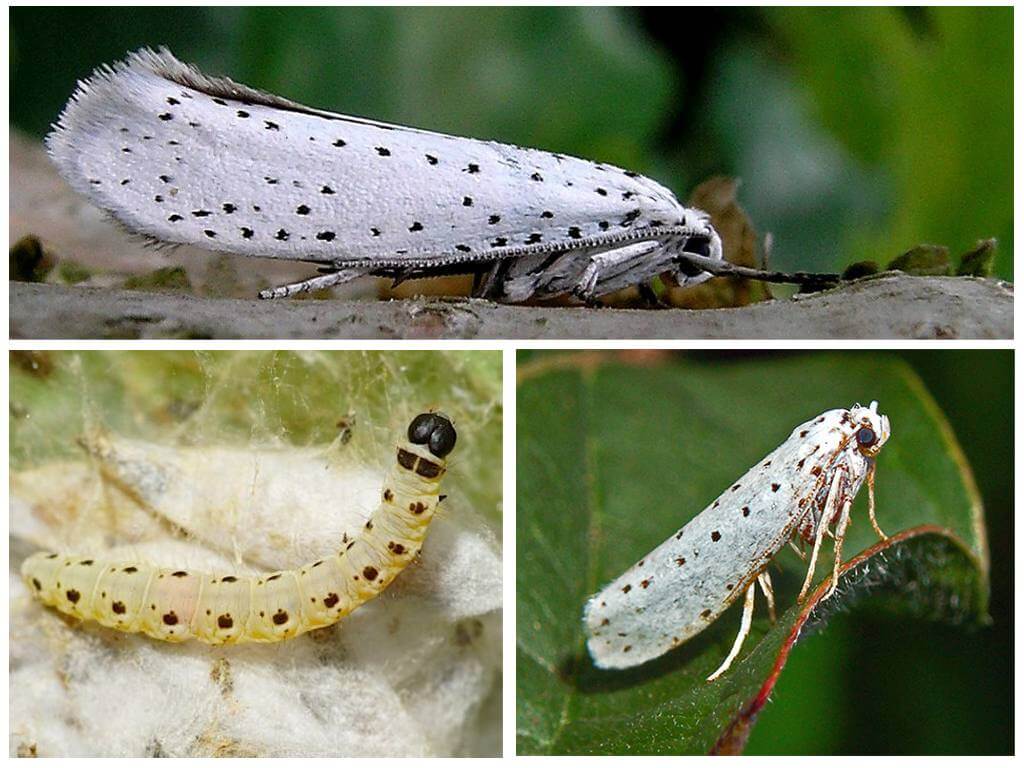- Potato moth
- Potato Moth Larvae
- Traces of potato moth
- Potato Moth Larvae and Caterpillars
- Potato Moth Remedies
History
Some 150 years ago in our country they did not even hear about potato moths. This misfortune came to our country not so long ago, and the population of the southern regions was the first to meet it. For potato moth, the natural environment is Africa. It was here that hordes of pest walked in time immemorial. Today, the moth has spread throughout the entire planet, where the average annual temperature does not fall below 10 degrees - only in such a climate the moth can multiply.
Interesting!
In winter, the insect spends a chrysalis in the ground or the remains of organic matter. If any form has been entered into storage, it continues its life cycle. Depending on the climate, from 2 to 8 generations can change in a year.
It is very important to find out in time what potato moth is and how to deal with it.
Appearance
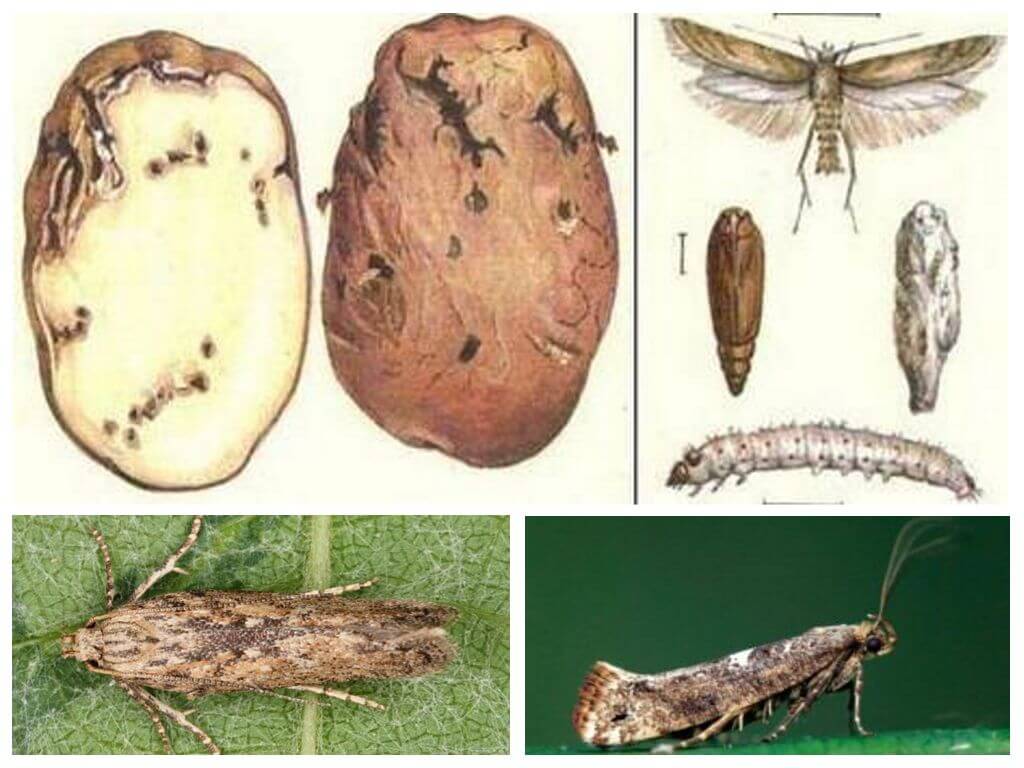
Potato moth is a small, invisible insect that looks like a nocturnal butterfly. With a full wingspan, its size does not exceed one and a half centimeters. The appearance of the moth inconspicuous: the front wings are gray-brown with dots and stripes, the hind wings are painted only in gray. The edges of the wings are uneven, terry.
Developmental stages
The life of a potato moth consists of four stages: an egg, a larva, a chrysalis and an adult butterfly.
In summer, a full cycle of potato moth takes about a month (depending on air temperature), while in winter the same processes take from 2 to 4 months. Only the stage of the larva is dangerous for potatoes, adult moth even lacks proboscis for food.
Lifestyle
The potato moth in the photo seems inconspicuous and uninteresting, to say nothing of the natural habitat: moving around the garden, you don’t just not pay attention to it. Its color and size allows it to remain invisible at any time of the day. The insect is most active in the early morning, before the sun has risen, and in the late evening, when it has already set.
To understand whether potato moth has populated your garden plot, it is enough to walk along the edge of the plantings, disturbing the potato tops. If there is an insect, they take off at the first alarm over the grass, again hiding after a few meters. When a butterfly sits on the ground and leaves, it is impossible to distinguish it from the background, it is so invisible.
In the butterfly stage, potato moth spends about 21 days. During this period, she needs to have time to lay up to 200 eggs on the tubers themselves, on the foliage, on the stems, in the soil and even on the relatives of the potato - other representatives of nightshade (including tomatoes).
In 5-15 days, the caterpillar of the potato moth matures inside the egg. For gardeners, this stage is the most harmful, since the most damage to plantings is done moth larvae.

The caterpillar is yellow-pink or greenish. Its length is about a centimeter. This stage develops up to 48 days, during which it manages to shed four times.
After the set number of days, the caterpillar of the potato moth makes a cocoon and turns into a chrysalis. Caterpillars prefer to attach a cocoon to plants, to walls or in crevices in the cellar floor, pupate right in the soil.
The pupa waits for winter in the upper layers of the soil or under the remains of tops. With the first warm days, gray butterflies appear, ready to fight the nightshade.
You can find potato moth in the garden throughout the season in its various forms. After the season ends and the infected fruit is sent for storage, the insect continues to develop and reproduce.
Interesting!
Potato moth is a tenacious creature: even if the storage temperature drops to -1 degree (damaging tubers), the caterpillars will remain unharmed. Potato moth (any stage) will die only at temperatures below -4 degrees and above 36. The optimum temperature is 22-26 degrees. Humidity should not exceed 80%.
Fight in the garden
To detect potato moth, be sure to regularly and thoroughly inspect the plants. First of all, you can notice the waste products of the insect on the fruits, trunks and foliage.
The caterpillar enters the fruit through the stalk or from the end where the flower was located. In potato tubers - through cracks, in the places of attachment to the roots or through the "eyes".
Up to 6 caterpillars can get into one fruit at a time, although one is enough to destroy it.
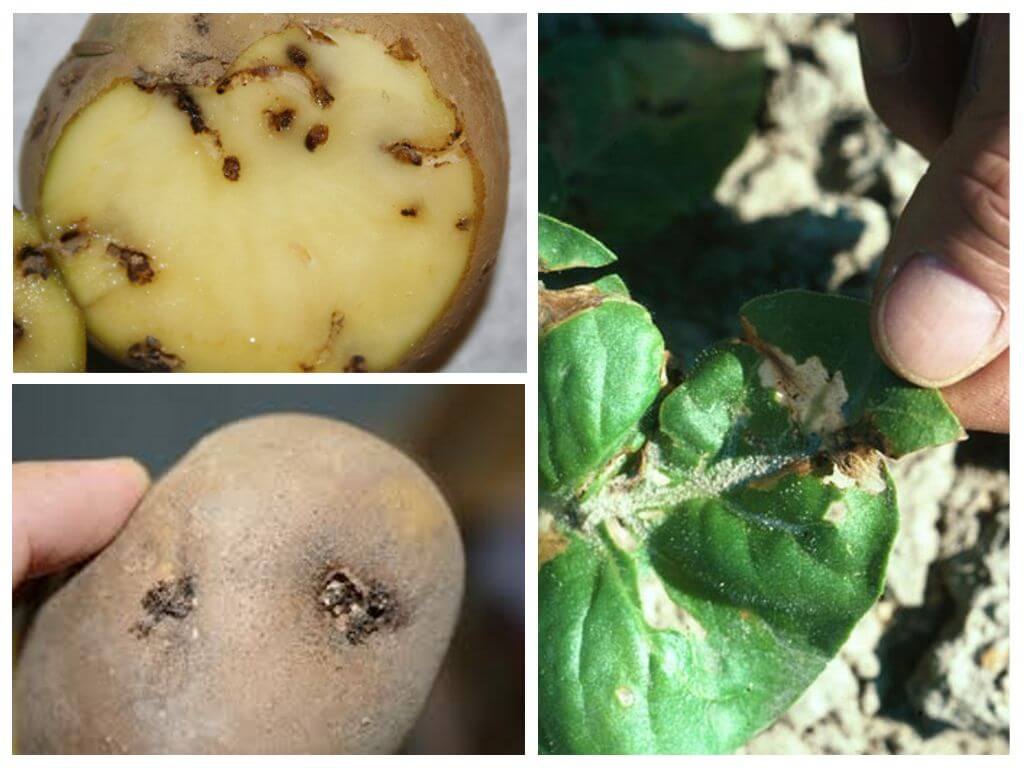
The most damage caused by potato moth is to potato tubers. In order to prevent the larvae from penetrating the potatoes, preventive measures are taken:
- Potatoes need to be planted deeper, and hills higher - only a layer of land from 15 cm can save from the pest;
- Harvesting must be done before the tops dry. 7-14 days before digging, the greenery is mowed and immediately removed, not allowing the caterpillars to dig into the ground;
- If traces of the presence of a moth are noticed, the site should be treated with chemicals. You can fight at home with potato moth using the same means that are used to eliminate the Colorado potato beetle: fastac, decis and others. After processing, at least 20 days must pass before the potato is eaten;
- Remove dug tubers from the field immediately, because in just an hour or two the butterfly can have time to lay eggs, thereby spoiling the entire crop.
Important!
It is possible to get rid of potato moth, but it will require some effort and careful adherence to recommendations. But all efforts are worth it if, as a result, the harvest of potatoes and other nightshade is saved.
Vault fight
If by the time the crop is transferred to the storehouse, signs of the appearance of the pest are detected, you will have to deal with potato moths in the basement. First of all, it is necessary to treat the tuber parasite with special preparations. Some of them can be made at home, some can be purchased in stores.
In order for the potato moth to die, it is necessary to combine two drugs: planriz and lepidocide. The first is used to prevent fungal infections, the second - to control the pest.
It is easy to prepare a solution; its amount is determined by the volume of the crop.
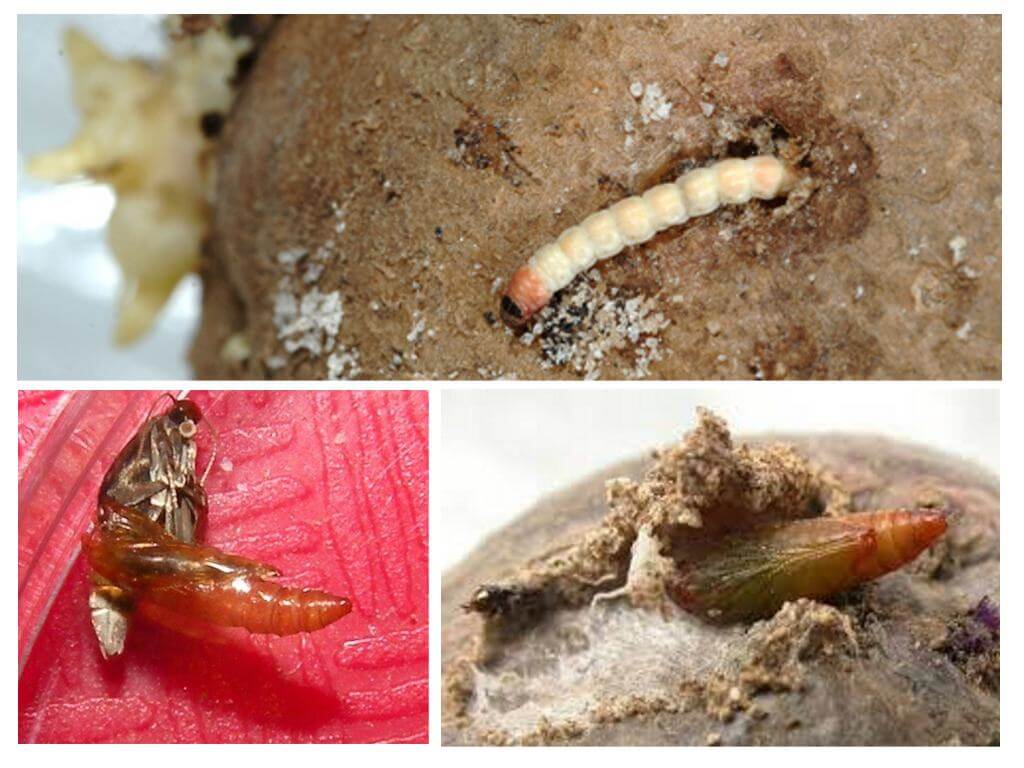
Potato moth will be defeated with the help of such a solution: in 100 liters of water add half a liter of planris and two liters of lepidocide. In a freshly prepared composition, dip the potatoes for 5-10 minutes. After this treatment, the tubers must be thoroughly dried.
Treated crops can be harvested in the cellar. You can eat it in just a few days. If you immerse potatoes in this composition before planting, this will save it from infection in the spring months.
Some gardeners prefer to use a different composition for processing: a liter of a 1% solution of bacterial preparations is used per 150 liters of water. Processing technology is similar to the first option.
You can store drugs for no longer than two years.
By these methods, you can defeat a moth in a potato whose yield was small. With significant amounts, it is necessary to think about what should be not control measures during storage, but preventive measures.
It is necessary to carefully inspect the store for the remaining pupae or butterflies that have flown recently since last year. If there are suspicions about their presence, the room must be treated with fumigants or whitewashed with quicklime. Experienced gardeners recommend using special smoke bombs at home in order to get rid of the pest - FAS or Gamma.
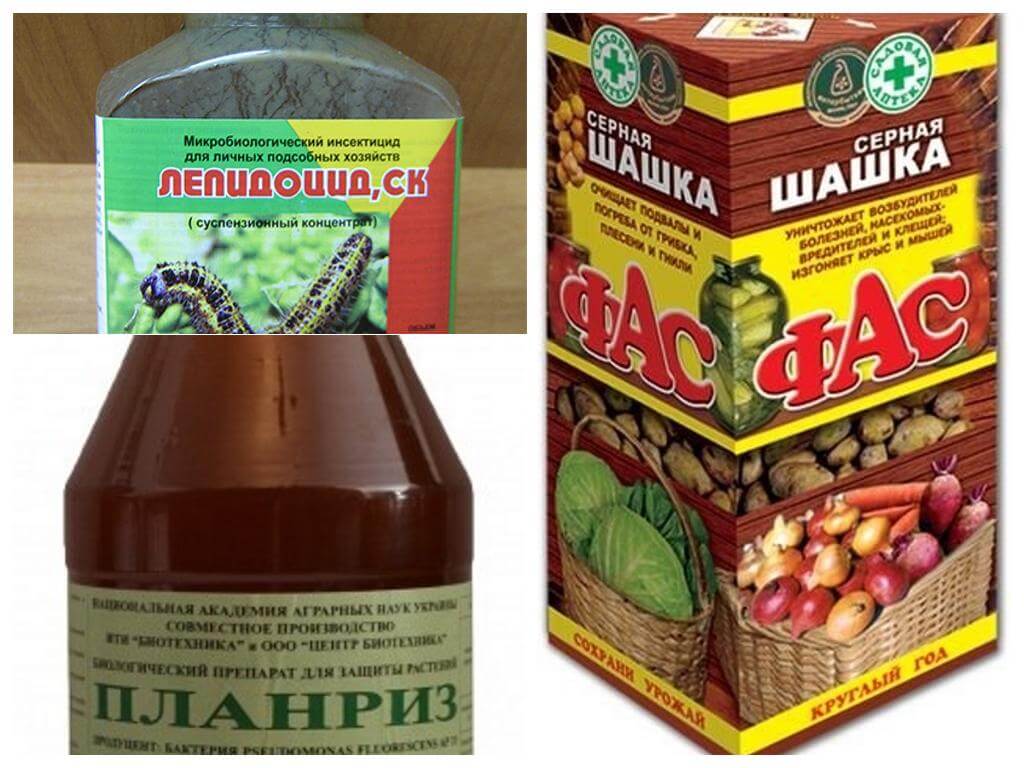
You can also fight potato moth in the cellar by spraying with the Entobacterin solution. This remedy is used against an adult. The moth in the treated room is not able to lay eggs.
Interesting!
The optimum temperature for storing potatoes is + 3 + 5 degrees. Moth does not develop at low temperature near zero and dies over time.
Quarantine
In order for the plants not to be infected in the new season, strict quarantine measures must be observed:
- Potatoes should be moved outside the phytosanitary zone according to the rules.
- It is important to monitor the availability of certificates of purchased material.
- Observe a number of measures aimed at eliminating the lesion:
- For planting, use only uninfected, treated tubers;
- A new sowing and wintering place should be removed from last year by at least a kilometer;
- Perform timely field processing;
- Destroy moth infected samos;
- Destroy the tops;
- Correctly harvest and timely transported to storage in the basement (or other premises);
- Potatoes from different fields should be stored in separate rooms;
- To treat the soil infected with moths with chemicals at least once every 10 days.
Having figured out how to get rid of potato moths in the cellar and in the garden, it is imperative to follow preventive measures, timely treat plants from moths that already appear. Only following the recommendations exactly will help to keep the crop.





